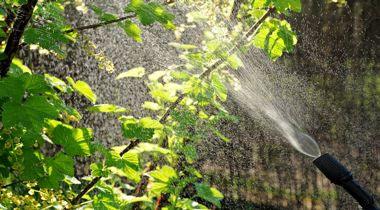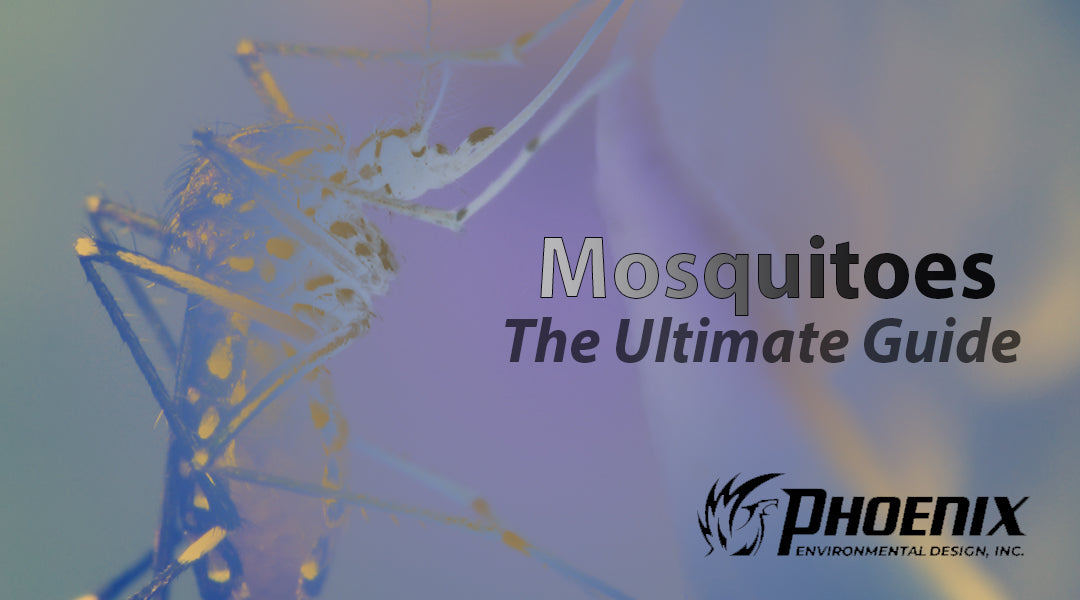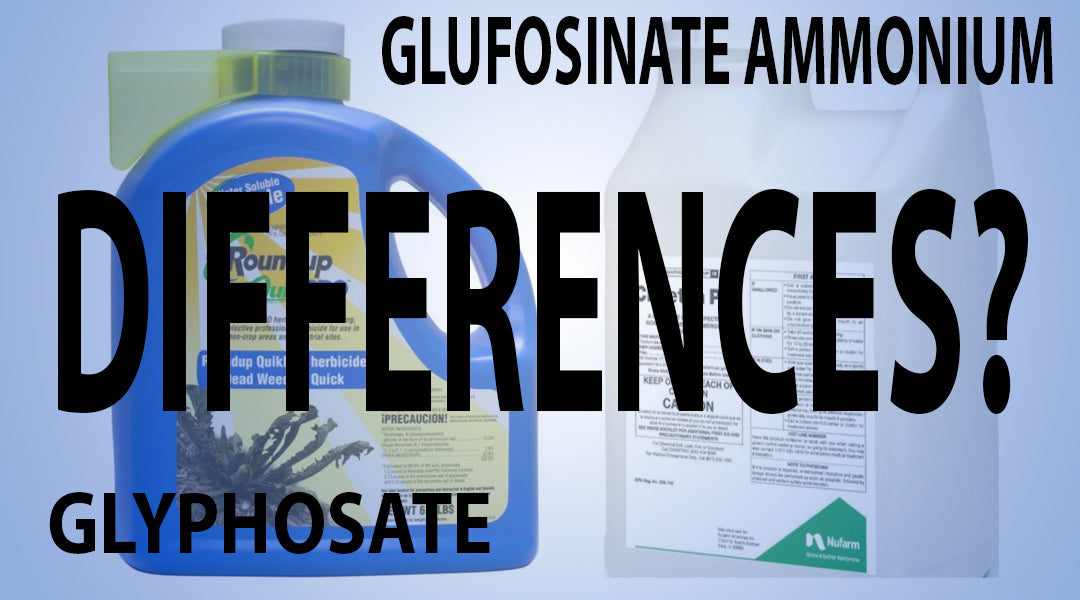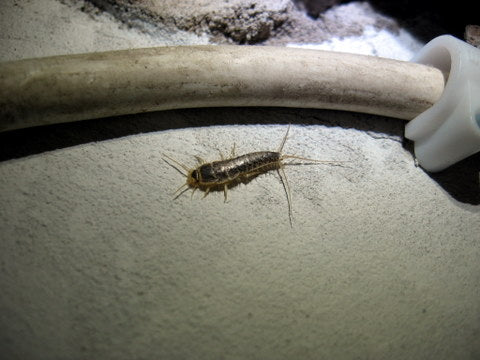
The mosquitoes are about to have a rude awakening.
Pesticides target a variety of pest species both indoors and outdoors, from bothersome insects to weeds and fungi. When applied correctly and following the instructions for use, pesticides eliminate existing pests and can help prevent future infestations. Pesticides not only protect your home from spiders and other unwanted pests, but they also protect your plants from damage and your home's structure from termite invasions.
However, when they're used incorrectly, pesticides can pollute waterways, the soil and your health. Therefore, it's important to learn all about a given pesticide, such as how to use it properly and dispose of the empty canisters. You should also take the time to consider whether or not using nonchemical solutions might work best for the situation.
What is a Pesticide?
Pesticides, which can either be natural, synthetic or organic, are used to control, prevent and kill pests. They can also suppress an infestation or repel pests when they're used as preventative maintenance. The term "pesticide" is used to describe a variety of products that control various pests. These products include:
- Insecticides
- Herbicides
- Fungicides
- Rodenticides
- Miticides
- Molluscicides
- Growth regulators
Not all pesticides contain the same ingredients or work in the same way. For example, one insecticide may contain a certain chemical that kills pests on contact; however, another insecticide may contain chemicals that take days to kill the pests. Some herbicides kill weeds on contact without harming the grass while other herbicides pose a threat to certain grasses.
Which Pesticide Should You Use?
Before you use a pesticide, you should consider whether or not you actually need it. First, you'll need to identify the pest and verify that it can cause damage over time. You should also research alternative methods before investing in the first chemical pesticide that you find. When seeking a treatment for pests in your home, business or backyard, you may have a few questions that come up during your search.

Are pests causing the problem?
Some people turn to pesticides only to find out that pests weren't the cause of the problem. In fact, it's easy to misidentify the cause and apply pesticides that only worsen the situation. Some factors to consider include:
- Poor irrigation
- Improper drainage
- Weather damage
- Herbicide toxicity
How large is the pest infestation, and will using a pesticide spray be enough?
Finding a caterpillar or two on your plants may not pose a problem if natural predators are also present. However, if you notice a large population chewing away at the leaves, you'll want to find a way to control the pests before they cause any further problems. Don't consider using pesticides based solely on the damage you've found. For example, if caterpillars have stripped the stems of all its leaves, applying an insecticide won't provide any benefits. You'll need to choose the correct pesticide for the problem or apply it preventatively before any symptoms have occurred.
What caused the problem, and can you change the conditions?
To prevent most pest problems, preventative maintenance is key. Understanding the potential problems ahead of time and applying preventative pesticides can reduce and prevent any damage from occurring in the future. Making changes in the home or the garden may also have an effect, such as moving plants to a sunny area to prevent shade-loving fungi from growing. Using an overhead sprinkling system may also reduce powdery mildew and other fungi from causing problems on some of your plants. Before applying a pesticide, take a look at a few of these alternative methods for managing pests.
- Biological control: Use beneficial insects to eliminate pests without the need for chemical pesticides.
- Cultural control: Use proper fertilization and watering techniques, and select pest-resistant species to prevent infestations.
- Mechanical control: Make sure to remove weeds that provide breeding grounds for pests, and use traps to create barriers against future pest invasions.
- Physical control: Use mulches to prevent weeds from growing.
- Replantation: Replant pest-resistant species when plants require consistent pesticide treatment.

It's not always easy to pick the right pesticide for the job.
How to Choose an Effective Pesticide
Once you've gone through the steps of correctly identifying the pest, whether it's an insect or a weed, you can start to research the appropriate pesticide for the problem. If you've decided that a pesticide is needed, choose a product that is made specifically for your target pest. Check the product label to make sure that it lists the pest; however, don't just use the label as your primary source for selecting a pesticide. Some pesticides only marginally treat certain pests while providing effective control for others. Research the pesticide fully before using it to target the pests in your home or yard.
Even highly toxic pesticides may only treat pests of certain life stages. For example, some insecticides only kill the larval stages but not the eggs or the pupae. However, other insecticides may only target the adults. Furthermore, some fungicides may only provide preventative maintenance and fail to eliminate current infections. Likewise, some herbicides may kill germinating weeds but not provide control for established and actively growing broadleaf weeds and grasses.
Before purchasing your pesticide product, check the label to make sure that it's appropriate to use on plants or in the treatment site. Some things to note include:
- Certain pesticides can cause serious damage to plants. Check with the label before use.
- Don't use pesticides on plants that you plan to eat.
- Never use outdoor-only pesticides inside your home.
Choose the Least-Toxic Alternatives for Treatment
Use the least-toxic pesticides to remedy your pest problem. Least-toxic pesticides consist of insecticidal petroleum, plant-based oils and soaps, and microbial insecticides such as Bacillus thuringiensis. These types of pesticides do the least harm while controlling pests in the target area.
You should also understand the difference between selective and broad-spectrum pesticides. Selective pesticides kill the target pests and closely related organisms. Broad-spectrum pesticides kill a variety of pests and other nontarget pests in the area. Likewise, many herbicides target select weeds but can also kill desirable plants if they're not used correctly. In addition, insecticides with low toxicity to humans may have high toxicity to honeybees, predator insects and aquatic life.
It's also important to note that the words "danger," "caution" and "warning" may only refer to the immediate threat of exposure to humans but not the long-term, chronic effects. The warning label may also not reflect the hazards for nontarget organisms and wildlife. Reading the label doesn't always reveal the bigger picture, so it's a good idea to research the product thoroughly before applying it anywhere near your home.

Using Pesticide Application Equipment
Before using pesticides, read the labels for instructions pertaining to the proper equipment for application. You not only need protective clothing but also the right equipment to distribute the product throughout the target area. Some of the protective items you may need include:
- Long rubber gloves
- Safety goggles
- A long-sleeved shirt
- Rubber boots
- A respirator
- Pants that go over your boots
- A waterproof hat
Some of the various equipment that you need to apply the pesticide include:
- Trigger pumps
- Compressed air sprayers
Ready-to-use pesticides normally come in trigger pumps with no need to dilute or mix the product. You can use the trigger pump and apply the pesticide to the target area without hassle and usually without the worry of drift. When using compressed air sprayers, you'll have to mix the chemicals yourself and take care to apply the product and maintain the sprayer to prevent malfunctions and spills.
If you have to mix your pesticides, use a designated set of measuring cups or spoons. Label them as "pesticide-use only," and keep them locked in your garage or garden shed away from food-prep areas. In addition, use a separate sprayer for each pesticide that you plan to use. For example, if you're applying an herbicide, mark the sprayer as "weed-use only" to prevent using it when applying insecticides.
Once you've applied the pesticide, remove your clothing, and keep it separate from other laundry items. Take a shower immediately after spraying the product, and always wash your hands before drinking, smoking, eating or using the restroom when working with pesticides.
How to Measure and Dilute Pesticide Concentrates
When in doubt, always follow the instructions on the pesticide label. Knowing how to properly measure concentrated pesticide formulations is key for their safe and effective use. The pesticide label shows the correct amount of water to use during mixing and offers additional information on how to apply the product correctly with the spray applicator. You may have to measure the area to know how much water and product that you'll need to treat the space.
If the label provides a specific dilution rate, follow the instructions precisely. You may need to test your sprayer with plain water beforehand to ensure maximum coverage in the target area with the recommended amount of diluted product. Never use more water or product than what the label indicates. Combining more pesticide product into the mixture won't kill the pests any quicker; you'll only be wasting product, money and time. In addition, you may cause further damage to the landscape and organisms by using excess chemicals.
How to Minimize Environmental Contamination
To avoid widespread contamination, use spot treatments when you can. A trigger pump works best when spot-treating an area and reduces drift and accidental application in nontarget areas. You can also use bait stations in specific locations to target pests in an area without affecting the surrounding landscape.
Make sure that the product doesn't run off into drains or blow onto nontarget areas. Avoid applying chemical pesticides just before it rains or turning on an irrigation system to avoid run-off. You should also avoid spraying pesticides on hard surfaces like sidewalks and driveways to prevent the product from washing off into storm drains.
To keep pesticides out of waterways, follow these specific guidelines:
- Don't dispose of pesticides in sinks, toilets or storm drains.
- Never clean pesticide equipment in areas where rinse water could flow into open waterways.
- Read the labels for more information regarding pesticide use near bodies of water.
- Check the weather report to prevent applying pesticides before rainstorms.

Spraying this tree for aphids before they cause any damage.
The Difference Between Indoor and Outdoor Pesticides
Most indoor pesticides contain unique formulas for eliminating pests without harming any people in the home. These pesticides don't leave residue on surfaces and are mostly safe to use around pets when they're applied as directed. Outdoor pesticides are created with special formulas that break down into less-toxic substances in certain conditions such as rain or daylight. Because they break down, the pesticides don't linger in the environment and cause toxic conditions for people and animals. If you're unsure whether or not you can use your pesticide indoors or outdoors, refer to the instructions for use, and only apply the product in areas where the label recommends.






Leave a comment (all fields required)